Lebanon's espionage network product of US-Israel plots against the country
By Julia Kassem
Exactly one month ago, the Israeli regime shifted its focus toward direct attacks on Lebanon, marked by terrorist pager detonations on September 17 that killed and injured thousands.
This was part of a strategy to pressure the Lebanese Resistance to stop supporting Gaza, a goal the US and France had been attempting to achieve diplomatically for months.
In his last speech before martyrdom, Hezbollah leader Sayyed Hassan Nasrallah reminded Israeli premier Benjamin Netanyahu that the rgeime4 would not succeed in achieving its objectives through military force.
Similarly, Al-Qassam Brigades spokesman Abu Obaida had delivered a warning to the Zionist entity weeks earlier, emphasizing that they cannot forcefully retrieve military captives, killing hundreds of Palestinians in the process.
Nasrallah also affirmed that Israel and the US cannot kill, bomb, or assassinate their way to separating the Lebanese front from Gaza or imposing a ceasefire in Lebanon while continuing the no-holds-barred genocidal war on Gaza.
Meanwhile, Israel is today attempting to force the implementation of Resolution 1701.
Prior to Nasrallah’s final speech, US media intensified efforts to sow division between the peoples of Lebanon, Palestine, and Iran.
On September 24, Israeli spy-turned-reporter Barak Ravid claimed, based on unnamed Western and Israeli officials, that Hezbollah had sought more assistance from Iran, which he said was refused.
This was merely a projection of Israel’s growing dependency on the US, reflected in an Axios headline four days later, reporting that "Israel asks the US to deter Iran after Hezbollah leader's assassination."
Following Nasrallah’s assassination, French daily Le Parisien falsely claimed that an Iranian mole was responsible for it. Owned by Louis Vuitton CEO Bernard Arnault, a major investor in Israeli cloud security firm Wiz (developed by Israel’s 8200 Intelligence Unit), Le Parisien routinely serves as a mouthpiece for Israeli psy-ops that align with Washington and Tel Aviv’s psychological warfare.
Israel strikes Christian-majority town in north Lebanon@Mariampresstv reports from Beirut. pic.twitter.com/dEFu5ixXSR
— Press TV 🔻 (@PressTV) October 16, 2024
This false narrative echoed claims since the martyrdom of Hamas leader Ismail Haniyeh in late July, which suggested Iran had betrayed the resistance. This narrative originated from The Telegraph and was picked up by Middle East Eye, which also claimed that IRGC Quds Force commander Esmail Qaani was “under investigation.”
However, these claims were discredited when Qaani publicly attended the funeral of senior IRGC commander Abbas Nilforoushan, martyred alongside Nasrallah on September 27.
The series of assassinations of top resistance leaders like Sayyed Nasrallah, Saleh al-Arouri, and Sheikh Kaouk was facilitated by the vast network of US-Israeli spies in Lebanon.
After the Rafiq Hariri assassination, Lebanon was pressured to hand over extensive data, including communication infrastructure, road maps, and personal networks. Additionally, US orders forced the dismantling of Hezbollah’s fiber-optic communication network, which would have protected the resistance and the broader community from Israeli and Western interference, wiretapping and surveillance.
In November last year, a significant quantity of US military equipment was delivered to the Lebanese Hamat Air Base, with American helicopters frequently seen traveling to and from the base.
As in 2020, the US consolidated its activities with the Lebanese Army and NGOs, even holding an “NGO day” at Hamat Air Base as part of the American Civil Military Support Element.
In the aftermath of Israeli bombings, US Ambassador Dorothy Shea ordered Army Chief Joseph Aoun, a loyal US lapdog, to shut the border crossing between Lebanon and Syria and halt the reconstruction work on the border to impose a siege on the displaced Lebanese.
Aoun defied Lebanese government orders, refusing to distribute aid to displaced civilians.
✍️ Feature -How Israel is wreaking havoc in Lebanon with banned depleted uranium bombs
— Press TV 🔻 (@PressTV) October 14, 2024
By Hiba Moradhttps://t.co/FEfito4ahB pic.twitter.com/ulEh5GwqXx
Meanwhile, Lebanese Forces leader Samir Geagea, vying for US approval as Lebanon’s next president, contributed to incitement against displaced Shia communities, falsely claiming Hezbollah fighters were sheltering among them.
This incitement was echoed by US and Saudi-backed media outlets like MTV and LBC, which claimed that these shelters were hosting Hezbollah fighters.
The fruits of over 5 years of CIA incitement against Hezbollah in its latter stages were aided by the aftermath of the US-engineered financial crisis in Lebanon, and the subsequent color revolution aimed at compromising Lebanon institutionally, via the Lebanese Army Commander, as well as individually, through the proliferation of spies.
From 2019 to the present time, the Lebanese currency devalued by nearly 100 percent, inflation skyrocketing by at least 171 percent and Lebanon plunged into darkness between 2020 and 2022 due to the currency crisis.
In the first three years after 2019, over 185 Mossad spies were caught and since then, more were exposed nonstop. In the aftermath of many of the Israeli bombings on Beirut in particular, spies were pulled out on the streets, to the rage of community members.
The CIA's incitement against Hezbollah has been amplified by Lebanon’s economic collapse. Since 2019, the Lebanese currency has devalued by nearly 100%, with inflation skyrocketing by at least 171%. Between 2020 and 2022, Lebanon plunged into darkness due to the currency crisis. During this time, over 185 Mossad spies were arrested, with many more exposed.
One spy, based on security sources cited by Al-Akhbar, was arrested in Dahiyeh on October 2, a long-term Mossad contact from Idlib, Syria. Drawing suspicion when he filmed after the attack on the Islamic Health Authority Center in Bashoura, it was found that sent photos of the destruction sites to Mossad.
Hezbollah's Deputy Chief reaffirmed the group's commitment to resisting the Israeli aggression in Lebanon, stressing that Hezbollah will continue to stand resolutely with the people of Lebanon and Palestine. pic.twitter.com/gYvgkcg1fK
— Press TV 🔻 (@PressTV) October 16, 2024
Other spies, like a Lebanese man named Bahaa, were found with extensive surveillance data on key areas in Dahiyeh and near Beirut's airport. The instruments recovered from him included computers and two phones filled with images of Dahiyeh streets and buildings, especially around the Airport Road (Tariq al-Matar) area.
Another Lebanese named “Mohammad H” was also arrested in the neighborhood dividing main Beirut from Dahiyeh. In early October, more spies were caught and handed over to the Lebanese police.
Two weeks prior, another agent was arrested in the Lebanese Forces-majority neighborhood of Ain el-Remmaneh, which borders the Dahiyeh neighborhood of Chiyah, with extensive information on martyred Hezbollah leader Sheikh Kaouk, suggesting his role in his murder.
Their motivation, investigations revealed, was financial rewards with large sums of dollars and Euros found in their possession. In most of the espionage cases both before the outbreak of war in Lebanon as well as during the war, the agents were recruited via social media, or directly through messaging applications, and paid around $500 per assignment, mainly transferring the money via cash transfer.
When Israeli spy Joshua Tartakovsky was caught in Beirut posing as a journalist two weeks ago, American-backed elements in the judiciary and army pressured for his deportation, allowing him to escape accountability.
This mirrors the 2019 escape of former Israeli agent Amer Fakhoury, revealing the extent of American interference in the security system in shielding spies and agents for Israel from accountability.
Washington is using these assassinations, aided by its network of spies, to push for a US-favored Lebanese president. Western media has also hinted toward it.
The Washington Post, for example, openly admitted that the US saw an opportunity to politically sideline Hezbollah in Lebanon. Days earlier, Israeli former premier Yair Lapid proposed raising the salaries of Lebanese Army officers from $120 to $500 in exchange for training by Emirati and French forces, both of which collaborate with Israel on intelligence.
Implications of Israeli atrocities
— Press TV 🔻 (@PressTV) October 18, 2024
This edition of the program is about the latest developments in the Israeli atrocities against Gaza and Lebanon and the retaliation of the resistance front, as well as the killing of Yahya Sinwar. https://t.co/Bj4iMZ0hzg
The low wages, a direct result of the US-engineered economic crisis, have contributed to the proliferation of spies.
US Ambassador Dorothy Shea further exacerbated tensions, stating that Lebanon should “prepare for a post-Hezbollah era”—a sentiment contradicted by Hezbollah’s continued strength on the battlefield.
Today, 17 days into the Israeli ground invasion and one month of direct war, Israel has failed to make headway in Lebanon, with over 30 soldiers killed and 300 injured, as per conservative estimates.
Israel's brutal siege on North Gaza is an attempt to make up for losses in Lebanon’s south by forcing a final-solution-style mass murder (there’s a name for it - the “General’s Plan”).
Israel, through its arrogance and hubris, is trying hard to push its objectives. Believing it can be successful in ethnically cleansing Palestinians from their ancestral lands by recreating the Nakba, it also believes it can replicate the goals it had in occupying southern Lebanon in 1978 in a farcical pursuit of removing the resistance from Lebanon.
The tactics of the US and Israel may grow more desperate in relying on psychological warfare and manipulation of the media to reach their objectives of fracturing and delegitimizing the resistance.
However, as the martyred Hezbollah leader Sayyed Nasrallah reminded us, the movement remains as strong as ever, both on the battlefield and in the hearts of its supporters.
Julia Kassem is a Beirut-based writer and commentator, whose work appears in PressTV, Al-Akhbar, and Al-Mayadeen English. She also appears on Press TV's Expose show.
(The views expressed in this article do not necessarily reflect those of Press TV.)
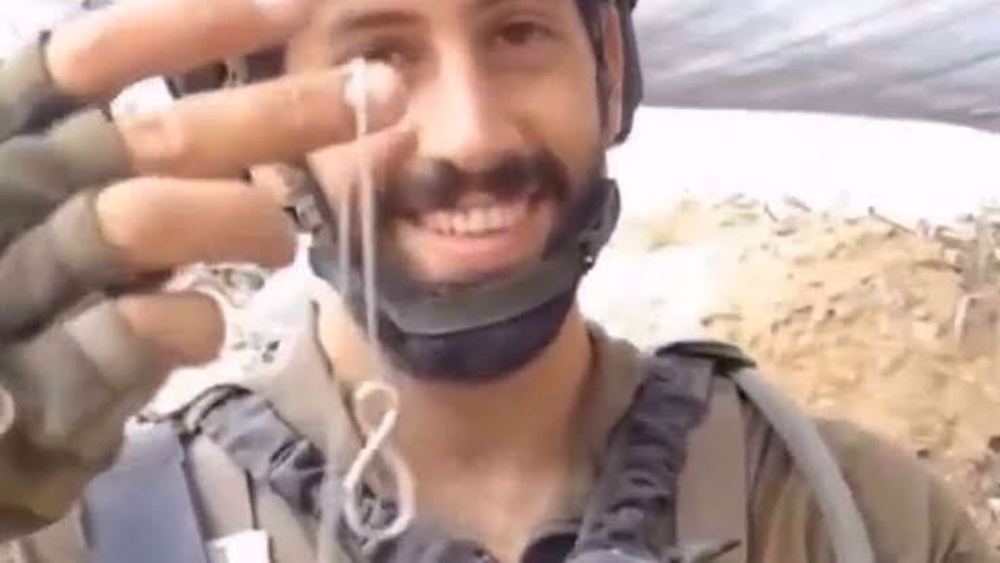
Israeli soldiers stole ‘mountains’ of cash and gold from Gaza, Lebanon, and Syria: Report
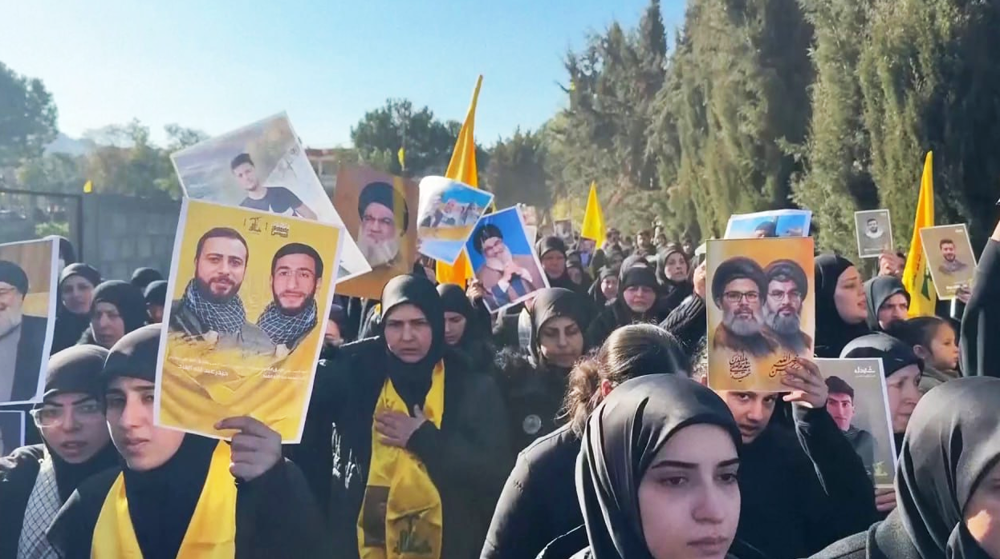
Thousands of mourners bid farewell to 120 Hezbollah fighters martyred in Israeli invasion

Abuse of UK Terrorism Act
Iran president congratulates Muslim leaders on holy month of Ramadan
Hundreds of Israeli settlers storm Al-Aqsa Mosque compound: Report
Iran Parliament dismisses economy minister over economic mismanagement
Unprecedented: US rights group drags Biden, Blinken to ICC over Gaza genocide
Kremlin: Macron talks of contacting Putin, but no real steps taken
Hamas decries as ‘war crime’ Israeli suspension of humanitarian aid to Gaza
Israeli cabinet allows military to call up 400,000 reservists
Iran as hub of technical and engineering services


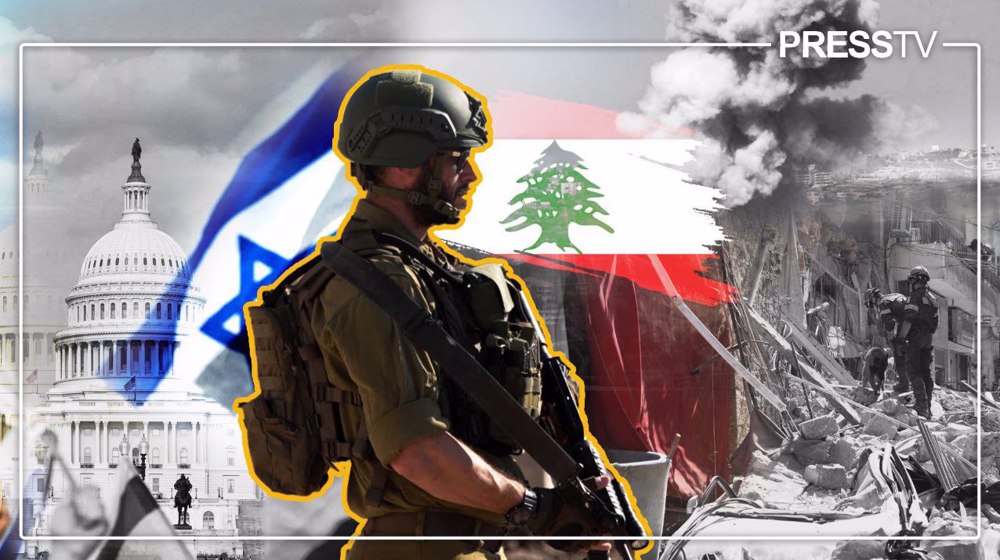



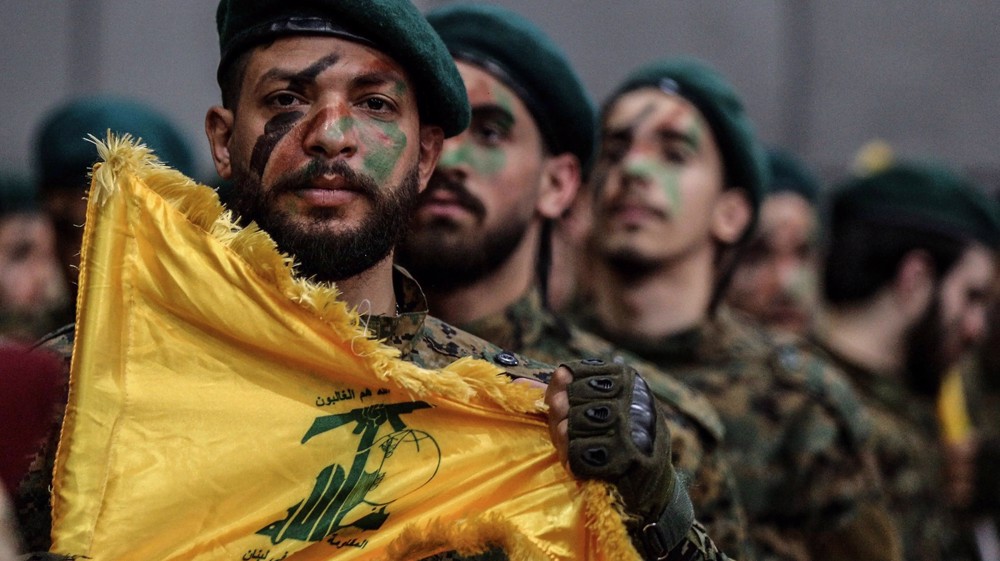

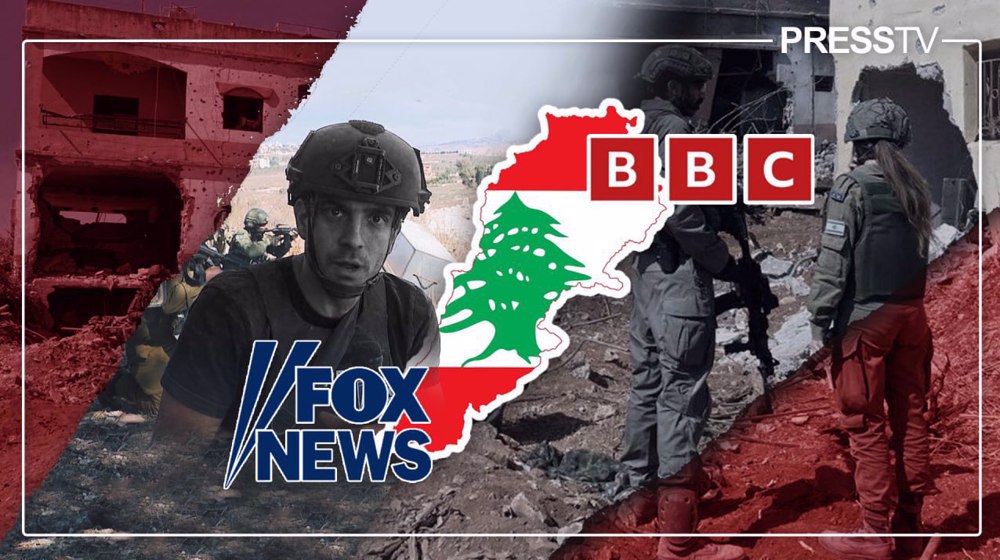

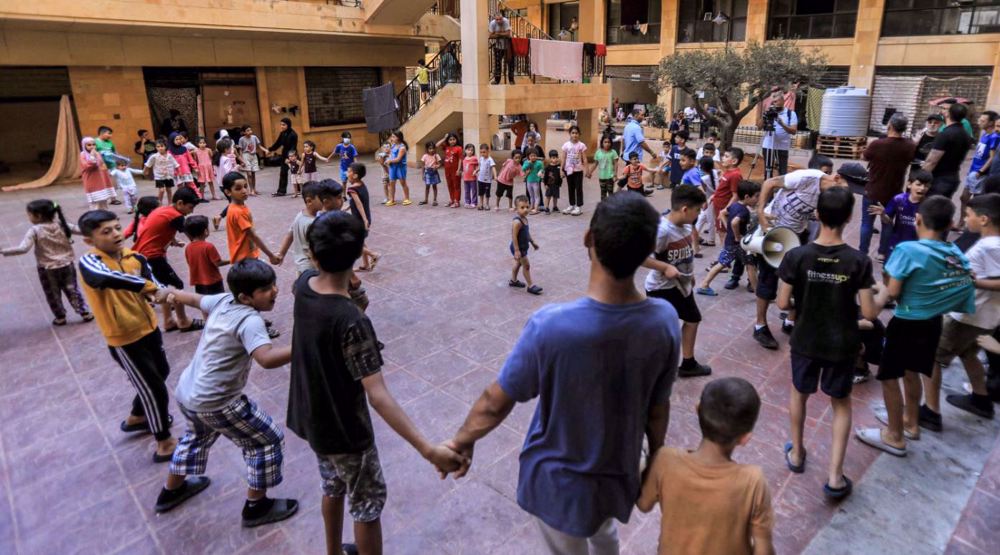

 This makes it easy to access the Press TV website
This makes it easy to access the Press TV website